Silent Nacht, Holy Nacht
It’s that time of year again tonight – Nitl Nacht! (Or at least it was last night, when I meant to post this.)
Silent night – that is without the learning of Torah.
What is Nitl Nacht? Where did it come from? I recently listened online to a lecture by Marc Shapiro and ended up giving small class in my neighborhood about Nitl Nacht and some related topics. Here’s some of what I said. I took most of it from the Marc Shapiro lecture, but some is also from Dovbear (here and here), Miriam Shaviv (here), the Seforim blog (here), and Hirhurim (here). I can’t seem to find where I downloaded the audio of Marc Shapiro’s lecture from, but I suspect that the lecture was mostly the same as what he wrote in ”Torah Study on Christmas Eve,” Journal of Jewish Thought and Philosophy 8 (1999), (which I didn’t read, due to the $40 price tag associated with downloading it.)
So what is Nitl Nacht? Well, basically, it’s a traditional approach to Christmas eve among most Chassidim, in that they feel it is forbidden to study Torah on that night. Generally, lithuanian style Yeshivas (basically, the Yeshivish world) do study Torah and criticize chassidim for their custom.
But it certainly didn’t start with Chassidim. Nitl Nacht was practiced in Italy hundreds of years ago, well before the Ba’al shem Tov established Chassidut. But where did it come from? There’s no source in the talmud, and not even in medieval rabbinic literature.
First, let’s take a look at the etymology of the term. Nitl refers to Christmas. All older sources refer only to Nitl, back to medieval times. “Nitl Nacht” is fairly modern term. So “Nitl Nacht” is the eve of Nitl, analogous to “Christmas Eve”. Marc Shapiro says that he is absolutely sure that the source is the latin term “Natali Dominis” – “The birth of our Lord”, from which “Noel” is derived. But Rabbis have not always been aware of that and assigned other resons for the term. Here are some of the other possibilities, as per Miriam Shaviv:
- Derives from the Hebrew word “nitleh” (“hanged”), describing Jesus’ end (although Christmas of course celebrates his birth…)
- Some say it alludes to negativity – “nit”
- Nitl is defined as a yiddish acronom for “nisht tor lernen”/”nisht yidden terren lernen,’– ie. “not allowed to learn.”
I would tend to agree with Shapiro. These three origins seem kind of silly, unless you’re just not aware of the real origin of the term, in which case they represent a valid struggle to understand.
What are some of the practices of Nitl Nach?
According to Rabbi Chaim Elazar Spira, the “Minchas Eliezer”, who served as the Munkaczer Rebbe from 1913-1937:
- No Torah study till midnight
- No interaction with his chasidim tilll midnight
- After midnight, both torah study and interaction permitted
- No sexual relations that night at all, even AFTER midnight, except:
- If the wife just went to mikvah, then the couple abstains till midnight, but can have sex after midnight
Some chassidic rebbes felt that Shabbat superseded Nitl, some did not.
But what could be the rationale for such a strange minhag?
The Chasam Sofer, (Moses Schreiber), 1762 – 1839, said that he heard from his teacher, Rabbi Nathan Adler
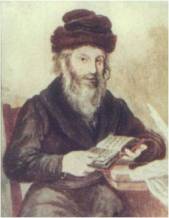
(1741–1800) that Jews are in mourning on Christmas eve, therefore sex is not permitted, just like a person in mourning, or like on Tisha B’Av, when we’re all in mourning. However, the Chasam Sofer didn’t agree with this reason and referred to the resulting practice of closing the mikvah on Nitl Nacht as a “minhag shtut”, a nonsensical custom, and points out that there’s no
tradition of following other laws of mourning at that time, such as not wearing leather shoes, not listening to music, etc.
tradition of following other laws of mourning at that time, such as not wearing leather shoes, not listening to music, etc.
Instead, he suggests a different, and rather insightful reason – Jews would normally study Torah at night, but go to sleep by midnight. Normally, non-Jews go to sleep much earlier, but on Christmas eve, they would have midnight mass, so for Jews to study only till midnight and then go to sleep would reflect badly on them in heaven, since Christians would still be up worshiping.
Therefore, the Chasam Sofer says, the original source of the minhag of Nitl Nacht was for people to go to sleep early then wake up at midnight to study again, in a sense countering the prayer of the Christians. This is a much more more logical, if not entirely rational origin.

Another,more rational explanation for the practice was given by the Reformist Eliezer Zweifel (1815-1888), that it was simply dangerous for Jews to be out and about on Christmas eve, and therefore they stayed home from the beit midrash, the study hall. This explanation has become very popular. But there’s no evidence for this explanation.
Furthermore, it doesn’t explain the ban on sexual relations, though a case could be made that it was to keep women from going to mikvah, where they might be in harm’s way. Nor does it explain the midnight stipulation, unless perhaps the assumption was that after midnight people wouldn’t be venturing outside anyway, so there would be no temptation to go to the beit midrash.
The Dinover Rebbe, Rabbi Tzvi Elimelech Spira of Dinov (c. 1783 – 1841) took a more mystical bent. When some people started learning Torah on Nittel Nacht, a dog appeared in front of their house. Dogs were seen as evil omens for much of the medieval period, especially black dogs.
It’s easy to see why….
Other explanations include that of Rabbi Shalom of Belz, who has a very chassidic persective.
He says that on Christmas eve, the sitra achra, a kabbalistic concept meaning “the other side” , and representing the forces of evil, is very strong, and therefore, dveykut with God must be at a maximum. For traditional chasidut, dveykut, closeness to god, through meditation and prayer is the most important thing. However, one must “come down to earth” as it were, and occasionally study the Torah, which often consists of mundane legal issues. But on Christmas eve, one must counter the Sitra Achra by maximizing dveykut, which means no semi-mundane Torah study. That would also explain the prohibition of sex.
Another chassidic explanation of that prohibition, even stranger, is that since the sitra achra is so strong that night, conceiving a child on that night can cause that child to become an apostate.
Getting even stranger, in Talmud Bavli, 90b, Rabbi Yochanan said, if you speak a halacha in the name of a deceased person, their lips move in the grave. This is understood as helping the balance of their souls move in a positive direction. Another chassidic explanation takes this idea and posits that if you study Torah on Christmas, you might accidentally study Torah that Jesus studied and that his soul would gain benefit and he’d be able to leave hell. Not sure why this is of particular concern on Christmas, but perhaps it being his traditional birthday would help his soul even more.
Some chasidim comemmorate nitl nacht on the Julian calendar Christmas as well, to be safe, sort of like our yom tov sheni shel galuyot, in a way.
Popular pastimes for nitl nacht included playing cards, or gambling on dice, or with a teetotum (see DovBear). I think it’s extremely likely that the dreidel, the Jewish version of the teetotum, migrated to chanukah because of the holidays’ proximity, so the connection between Chanukah & Christmas is not just a modern one.
But Nitl Nacht may have really been all about superstition and fear of the “bogeyman” Jesus:
Johannes Pfefferkorn (1469–1523) was a German theologian who converted from Judaism to Christianity. He wrote that the Jews “believe and maintain that the lord Jesus, punished by God because of his apostasy and false teaching, has to wander in all pits of excrement or latrines throughout the world that same night. Thus I learned and believed unthinkingly from my youth on. When it was Christmas eve I used to urinate outside of the privy because of fear and worry of the hanged Jesus.”
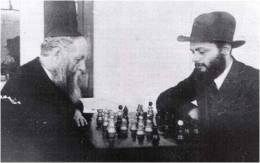
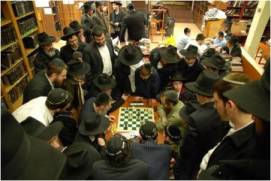

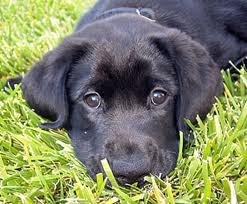
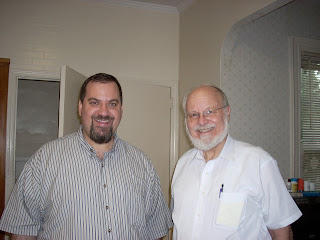
Comments
Post a Comment